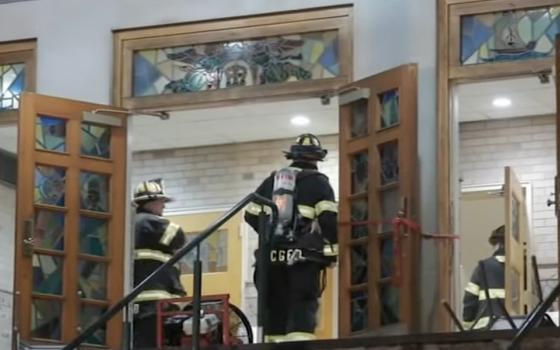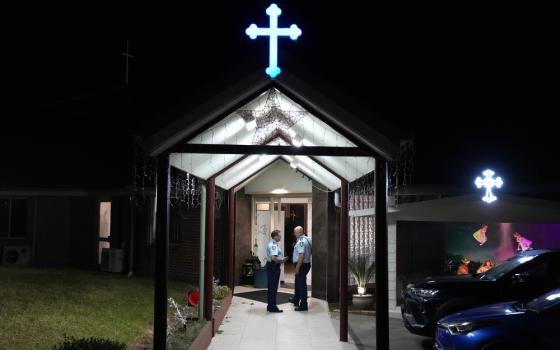
Over the past decade, steady economic growth in Latin America has spurred a thirst for energy that the region’s governments are increasingly trying to quench by harnessing rivers.
Supporters tout hydroelectricity as a clean, renewable, low-carbon alternative to fossil fuels, but opponents say those claims are not true. And in Brazil, Peru and Chile, plans for major dams have sparked conflicts with environmentalists and indigenous people.
The best-known battle has centered on Brazil’s controversial Belo Monte dam, for which the government granted a license despite a high-profile campaign that included a visit from Hollywood director James Cameron, who compared the project to the environmental cataclysm portrayed in his film “Avatar.”
The dam site, in the lawless and violent state of Pará, is a few hours by road from the place where Notre Dame Sr. Dorothy Stang was murdered by hired gunmen in 2005 for standing up to loggers who were threatening smallholders who were trying to save the forest.
The Brazilian government rejected an appeal from the Organization of American States to halt the Belo Monte project, which will rechannel the Xingú River and flood nearly 260 square miles of land, displacing some 20,000 people, including indigenous communities.
Critics say the dam will be an economic and environmental boondoggle, operating at only a fraction of its capacity during the dry season and emitting methane -- a potent greenhouse gas -- from its reservoir because of the large amount of vegetation that will decompose after flooding.
 Local people have mixed opinions, with some expecting the dam to bring paved roads and jobs. But Bishop Erwin Kräutler, the Austrian-born prelate of Xingú, whose see -- one of the largest in Latin America -- includes the proposed dam site, says people should not have to accept the dam in order to receive public services to which they are legally entitled.
Local people have mixed opinions, with some expecting the dam to bring paved roads and jobs. But Bishop Erwin Kräutler, the Austrian-born prelate of Xingú, whose see -- one of the largest in Latin America -- includes the proposed dam site, says people should not have to accept the dam in order to receive public services to which they are legally entitled.
“Do people want Belo Monte?” he asked. “No. People want jobs, they want health care, paved roads, education, housing and basic sanitation services.”
Four years ago, when bishops from throughout Latin America and the Caribbean held their fifth General Conference in Aparecida, Brazil, Kräutler warned that it was “five minutes to midnight” for Amazonia. “I don’t want to be a prophet of the apocalypse,” he says now, but he sees little hope for the region under the current policies of Brazil and its neighbors in the Amazon Basin.
“There has never been discussion of the kind of development we want here in Amazonia,” he said. “The decisions were always imposed from outside. Scientists, university professors and researchers were never consulted. Amazonia is seen as a huge deposit of wealth to be exploited, and the consequences have been disastrous.”
Recent studies of satellite photos show a sharp uptick in deforestation in the Brazilian Amazon, with the greatest increase in places where major dams, including Belo Monte, are planned, according to Christian Poirier of Amazon Watch, a nonprofit organization that defends the rights of indigenous peoples.
The deforestation “in large part is due to influx of migrant workers who are coming in hopes of finding work,” Poirier said. “Only a small percentage do, so the migrants are forced to carve out a livelihood in the forest in the area where the project is being built.”
Meanwhile, to the west, activists in Peru worry that parts of the Amazon basin in that country will suffer the same fate as the Brazilian forest. Leaders of the two countries signed a pact in June 2010 that will allow Brazilian companies to build dams in Peru to generate electricity for export to Brazil.
The first was slated for the Inambari River, which flows into the Madre de Dios River in southeastern Peru. Protests from local communities slowed the approval process, and the temporary concession granted to Egasur, a Brazilian consortium, expired in October 2010.
After renewed protests, the Peruvian government issued a decree in June declaring the concession “extinguished,” but it is not clear if that has any real meaning, since the concession had already expired. The decree leaves open the possibility of Egasur or another company seeking a final concession, if local communities agree.
Peru’s new president, Ollanta Humala, who will take office on July 28, is likely to face opposition to the Inambari dam and others, including one planned for the Ene River in central Peru, which would flood some 15 Asháninka communities.
He will also inherit a plan for 20 dams on the Marañón River in northern Peru, which would flood between 50 and 60 Awajún and Wampis communities, according to Roberto Espinoza, an adviser to the Interethnic Association for Development of the Peruvian Amazon (Asociación Interétnica de Desarrollo de la Selva Peruana, or AIDESEP), the largest umbrella organization of Amazonian indigenous groups in Peru.
There have been a few small victories in the face-off between activists and dams in Latin America. On June 20, a Chilean court ordered the government to suspend plans for a $3 billion project to build five dams on two rivers in the rugged Patagonian region in the south of the country.
Officials say the country -- which depends on imported oil and gas -- needs the 2,750 megawatts of energy that the project would generate. Opponents object to the environmental damage that would result from damming the Baker and Pascua rivers and running more than 1,200 miles of transmission lines along a route that would pass through protected areas.
Protests over the project turned violent before the court ordered the suspension for a review of the approval process for the dams. The ruling was a victory, but it is not clear whether it is enough to stop the project.
[Lima, Peru-based Barbara Fraser is a longtime NCR contributor. She is also a member of the Society of Environmental Journalists and the National Association of Science Writers.]




